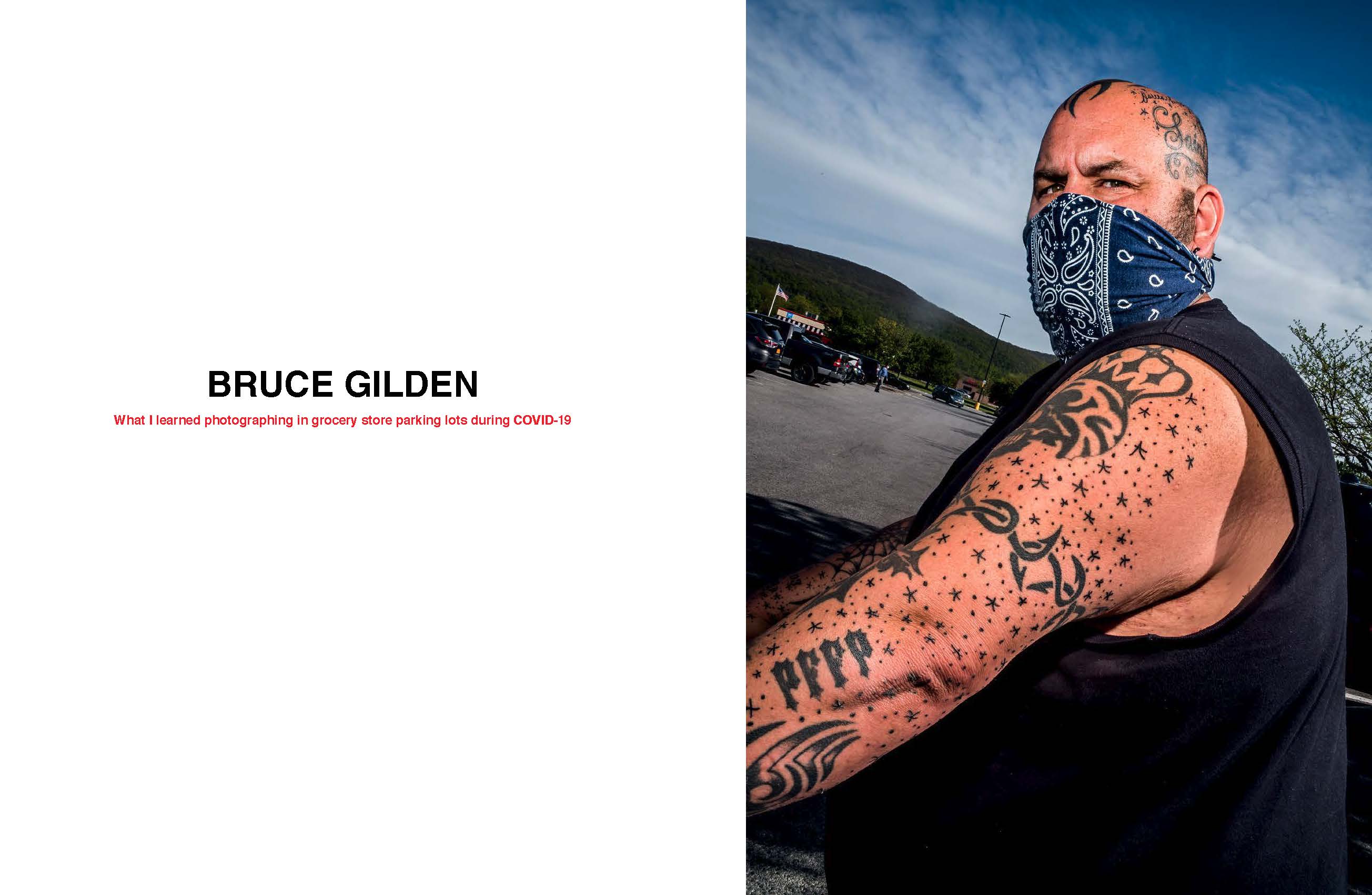While Bruce Gilden is best known for his arresting black-and-white street photography from 1970s and 80s New York and the confrontational, flash-lit closeups of Americans from all walks of life. “I’m known for taking pictures very close,” says Gilden. “And the older I get, the closer I get.” These days, however, he’s more often found applying his signature style to subjects around all four corners of the globe: as Gilden remembers, his final three assignments before lockdown included a personal project in the bustling markets of Palermo, a Gucci campaign in northern Italy, and a Trump rally in Charlotte, NC, for Vanity Fair. His eclectic range of photographic projects ground to a halt, however, when New York State entered lockdown at the end of March.
“I realized early on that if I’m stuck at home, I’m probably going to sit here and really get unhappy and have arguments with my wife every day, so I should try and go out and do something,” Gilden says. “You have to find a way to do what’s possible, rather than sit home and brood about it.” Undeterred by the limitations imposed on him by the rules of this new normal—it’s safe to say that Gilden’s typical approach to shooting firmly does not abide by social distancing—Gilden began shooting masked customers outside his local branches of Walmart and Adams. With their permission, and from six feet away, of course.
Interview by Liam Hess.


When did you start shooting the people outside the supermarkets, and what drew you to them as a subject?
I came back from Italy maybe the day before the shit hit the fan, and so I was sitting at home feeling really nuts because I couldn’t go anywhere. There was nothing I could shoot, there was nobody out. Then they introduced this regulation that people had to wear masks in New York State. Now, we’re used to people wearing masks, but at that time, in the beginning, it reminded me of the crappy Westerns and sci-fi movies I watched as a kid. A lot of people didn’t want to go out at that time, but they all had to go shopping. When I started shooting, I figured everyone’s gonna give me this grief over social distancing. I asked all the people I shot, and no one really complained which was interesting. If I took candid shots and somebody complained, I would probably be thrown out of the lot, and that was the end of that. I photographed at least 120 people, and I’d say, two people gave me a little grief over social distancing. And maybe five said no. I don’t know if that means they were longing for contact, it was quite interesting.


You’ve photographed New York at moments of crisis before—how did this feel, similar or different to those of past decades?
I have to say, when I go into Manhattan, it’s a different Manhattan, and not only because of the gentrification. I always said I would have liked to have been alive in the 1920s or 30s, when you had all the ships, and all the sleazy hotels on the West Side, and you had the characters and you had the overhead trains, very gritty and slimy and grungy, you know, that would have been ideal. I wasn’t around then of course, otherwise, I wouldn’t be talking to you here now. Gentrification is dull, it’s boring. The people are boring, they have no soul. But you know, everything has a shelf life. And for me, it was eerie, because I didn’t go into the city until about a month after the shit hit the fan. It was weird driving through and there was hardly anybody out. It’s like after 9/11, everybody said, oh, they were so frightened, people started moving out of the city. But I don’t have knee jerk reactions to things. I had no knee jerk reaction to 9/11 and no knee jerk reaction to COVID. I would stay put, and then see how the chips fall. I’m sure everything eventually will go back to normal, but normal in Manhattan is not the Manhattan I know.













